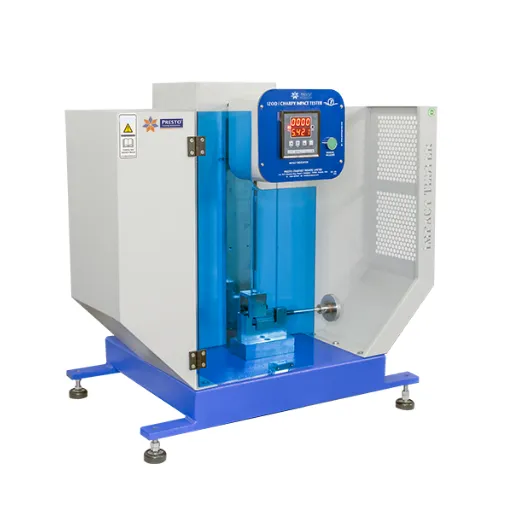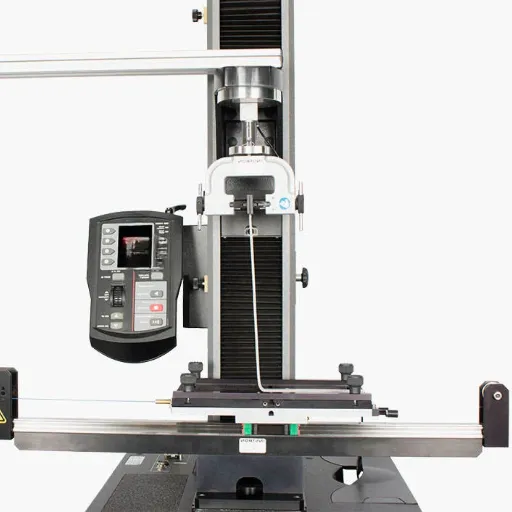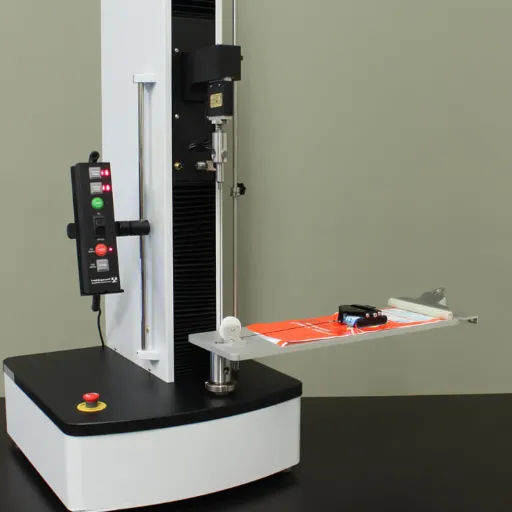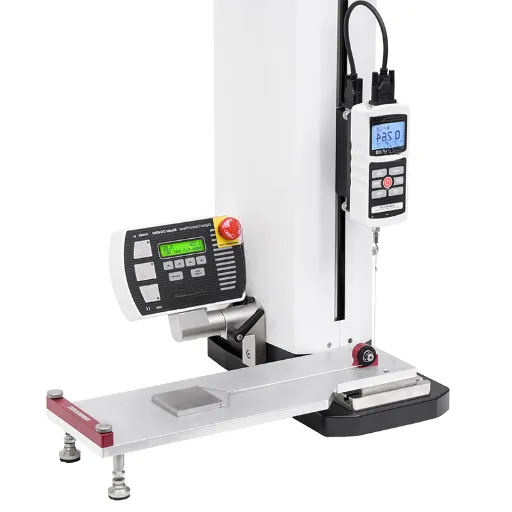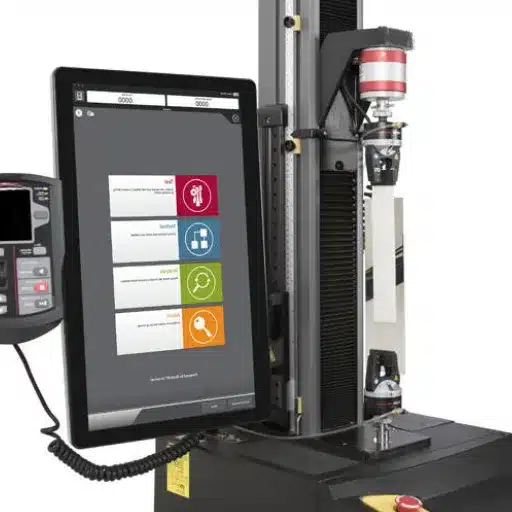Material testing is always an essential procedure in engineering disciplines, and one test stands out as supreme for checking a material’s toughness against sudden impacts—the Charpy Impact Test. This is basically a very popular method of determining toughness properties of materials, for being considered under rapidly applied forces by engineers and designers for various demanding applications. This guide will walk you through the basics of the Charpy Impact Test, its importance, and its role in safeguarding and assuring performance across industries. Get ready to learn how the results of the test inform decisions in civil engineering and aerospace.
Introduction to Impact Testing
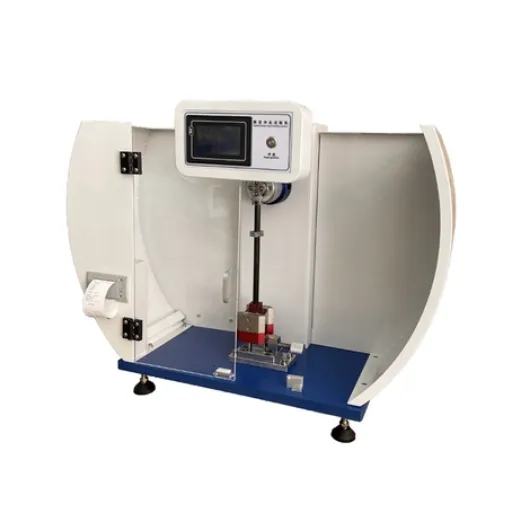
Overview of the Charpy Impact Test
The Charpy Impact Test constitutes a standardized method for the determination of a material’s toughness and its capacity for energy absorption on impact. The working of the test consists of striking a notched sample of the material with a pendulum hammer so that the sample transmits energy to the hammer during fracture. This measurement then serves to ascertain the functioning of the material in sudden and impending forces, crucial for the importance concerning safety and durability.
The test must be performed with predefined specimen dimensions and a notch to ensure uniformity in the results. The notch is basically a stress concentrator point simulating real service conditions where flaws or design features may contribute to failure. Measuring the energy absorbed and expressed in joules gives a measure of the resistance of the material to impact. A material that absorbs a lot of energy is said to be tough and resistant to brittle failure, while a material that absorbs little energy is likely to fracture under similar conditions.
The Charpy Impact Test provides engineers and designers in construction, manufacturing, and aerospace with vital data. When they know the impact behavior of materials, they will be able to select the most suitable materials for applications while complementing structural integrity and working safely within high-stress environments or ones subject to sudden forces.
Remember that with impact behavior working, materials of those critical applications will be chosen if he or she knows their impact behavior. So, the Charpy Impact Test assures both structural integrity and safety of the working environment in cases of high stress or unexpected force application.
History and Purpose
Developed in the early 20th century, the Charpy Impact Test was created to measure the toughness of materials and their resistance to high-speed impact. This test came about as a reliable method during the time when industrial manufacturers were searching for ways to standardize tests to check for material durability and safety, especially in construction and manufacturing. The test was vital in preventing structural collapses due to unforeseen high-impact forces.
The main purpose of the test is to measure the energy absorbed by a material during fracture, thereby shedding light on the behavior of the material under dynamic stress conditions. With this information, engineers and scientists ascertain whether a given material will safely withstand the demands of its application, particularly if mechanical shock or stress is an anticipated factor.
To ensure materials meet safety and performance standards, the Charpy Impact Test has long been widely applied in diverse fields. Applications exist in aerospace, automotive, and construction industries where reliability and safety are assured. Testing brings attention to any potential weaknesses before they lead to failures and preserves their structural integrity along with safety risks in numerous applications.
Importance in Material Testing
Material testing is one anchored process that assures the dependability, safety, and longevity of materials being used in any industry. It basically involves the Charpy Impact Test, amongst other tests, to check how materials react to stresses, impacts, and environmental influences. This information will stand as a basis for deciding whether a material will be fit for the given type of use. Safety is key in the areas of aerospace, automotive, and construction.
The great importance of material testing lies in the ability to detect any malfunctions in materials before they are placed for use. By finding off these vulnerabilities, manufacturers will avoid instances where materials will yield in structural failures and make way for repairs that do not cost much, system downtime, or even more hazards from accidents. It will then be the best approach to reducing risks and ensuring that materials perform in the asking moments of the real world.
The exemplary method of testing material attributes was further innovated through imparting knowledge about material behavior and performance limits. It is based on such knowledge that we can develop new materials and technologies capable of bearing heavier loads and withstanding longer operational times or operating under quite adverse environments. It can be said that if one seriously contemplates, along with an understanding of the material behavior, through some proficiently conducted tests, then industries can maintain ever better safety, environmental consciousness, and efficiency levels within their applications.
What is the Charpy Impact Test?
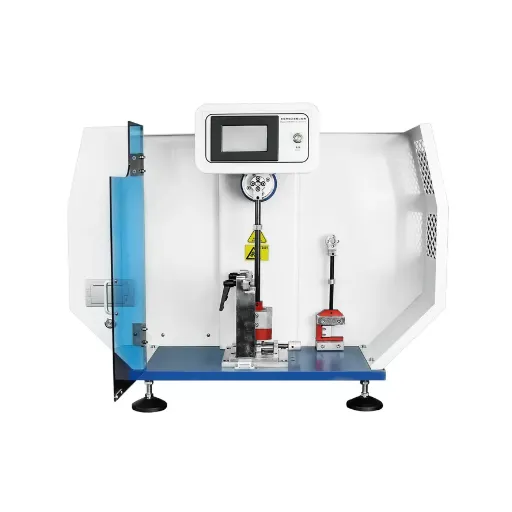
Test Procedure and Equipment
The Charpy Impact Test is a standardized method used to measure the toughness of a material, specifically its ability to absorb energy during fracture. This test helps determine how a material will behave under sudden impacts, making it a vital assessment for structural safety in various industries.
The test procedure involves using a pendulum-type hammer to strike a notched sample of the test material. The test specimen is typically a rectangular bar with a pre-made notch to focus the impact and simulate a stress concentration. The pendulum swings from a fixed height, breaking the specimen, and the energy absorbed during the fracture is measured. This energy, often recorded in joules, reflects the material’s impact resistance.
The equipment required for the Charpy Impact Test includes the test specimen, a pendulum impact testing machine, and a measurement system to record the absorbed energy. The test is usually conducted under controlled conditions, which can include various temperatures to study the material’s behavior in differing environments. This standardized process ensures reliable results that can guide material selection and design for safety-critical applications.
Measuring Results and Standards
The results of a Charpy Impact Test are mainly measured in terms of the energy absorbed by the material during fracture. The energy imparted during fracturing is a good measure of toughness; hence, we use it as a measure in this test. The more energy absorbed, the tougher the material is regarded to be, along with its resistance to sudden impacts and brittle failures.
The Charpy Impact Test comes with a plethora of standardized methods to maintain consistency and accuracy. ASTM E23 and ISO 148-1 are some conventionally followed standards that specify critical elements such as dimensions of test specimens, types of notches, and procedures to be followed in performing the test. Exercising these standards allows materials to be compared with others; hence, engineers and designers can arrive at competent decisions based upon traceable data.
Thus adhering to standards, the Charpy Impact Test remains a trusted quality assurance and materials research tool. Its results go toward predicting the material’s capability in real-world applications, especially in components subjected to dynamic or impact loads. This guides the selection of materials that satisfy the safety and performance requirements in various fields, like construction, automotive, and aerospace.
Comparison with Other Tests (e.g., Izod)
The Charpy Impact Test and the Izod Test of Impact strength are two of the widely conducted experiments to assess the toughness of a material and its energy-absorbing capabilities during an impact. Despite their close similarities, slight differences exist in their methods of testing, set-up, and applications that render one or the other more suitable for certain instances. Both are tests meant to assess how materials will be able to resist sudden or impact loading conditions.
Key Differences:
- Specimen Orientation: The Charpy test uses horizontally placed specimens, while the Izod test uses vertically clamped specimens
- Support Configuration: Charpy specimens rest on two supports; Izod specimens are clamped at one end
- Force Application: Different setups affect how force is applied and the material response
Yet another variation lies in the applications for testing. The Charpy impact test is more commonly applied within structural engineering and other fields in determining the performance of materials under conditions that involve dynamic loads in the real world. Hence, the Izod impact test is mostly used by manufacturers and quality assurance officers, where usually plastics and composites are under test. Both offer suitable insight into the behavior of one material, but the choice of which to employ lies in the material under study and its intended application.
Significance of the Charpy Impact Test

Understanding Material Behavior
Understanding material behavior is an essential concern in order to assess a material’s ability to perform in given conditions. The Charpy impact testing provides an essential complement to the test by measuring the energy absorbed by the test specimen during fracture. This information serves to define the toughness of materials so engineers and researchers can establish expected behavior under sudden impacts or dynamic loading conditions. This test thereby enables industry to give guarantees on the safety and durability aspects of materials used in critical applications such as construction, automotive, and aerospace.
The test operates by striking the notched specimen with the pendulum hammer, while the energy used in breaking the sample is recorded. These results indicate the toughness of a material and its ability to withstand a certain amount of stress before failing. This data is crucial when materials are selected for applications in highly life-threatening environments. Moreover, it helps identify whether materials tend to show behaviors relating to ductile fracture or tough or brittle fracture, which is crucial while determining their appropriateness for respective applications.
Thus, the Charpy impact test stands as a dependable and widely used method to ascertain the impact behavior of materials under working conditions. Collected data find application in industrial quality control, the development, and the criteria for material selection. Having clear-cut interpretation and clear results, the test remains a crucial means to understand and forecast the behavior of materials under practical-impact conditions.
Evaluating Toughness Under Impact
Under impact, the toughness of a material is a property by which it is capable of absorbing energy and thus gives resistance to fracture under a suddenly applied load. Some of the key factors that influence the toughness of materials include composition, temperature, and strain rate. High ductility goes with high toughness during impact, as most metals deform extensively prior to fracture. On the other hand, brittle materials tend to absorb less energy; hence, they are easily fractured under similar conditions.
Critical Factors Affecting Impact Toughness:
- Temperature: Materials become more brittle at low temperatures
- Strain Rate: Faster loading reduces material ductility
- Material Composition: Affects inherent toughness properties
- Microstructure: Influences energy absorption capability
Temperature is a significant issue for impact toughness because materials tend to become more brittle at low temperatures. A notable example is steel, which undergoes a transition from ductile to brittle as the temperature drops. This characteristic, as determined by tests such as the Charpy impact test, indicates that materials should be tested under conditions that mimic their actual applications to ensure their ability to withstand the environmental stresses to which they are subjected in service.
The rate at which strain is applied also comes into play; the faster the loading procedure, the higher the strain rate and the lower the ductility of the specimen. Higher strain rates are those witnessed during sudden impacts or collisions, causing some materials to fail more abruptly as they would not have the time to absorb ample amounts of energy. Armed with this knowledge, engineers and researchers can make the best possible selections for materials used in impact-resistant applications and thus ensure safety, durability, and reliability in industries.
Importance of Quality Control
Impact testing is the most important test carried out in quality control to assess material toughness and strength. It measures the ability of the material to absorb energy within itself or against suddenly applied forces without fracturing. Any useful information necessary is fed into identifying defects or the weakness of materials before utilizing them in products or structures. Thus, production testing ensures materials are safe and perform well according to the standard set by the manufacturer.
Are these machines also extremely important to ensure uniformity of material properties in different production batches? Material-property variation can result in a performance issue or outright failure in the product life cycle. Through regular testing, manufacturers are able to detect any such variation at later stages for timely corrective action, so that they can revert back to the highest quality standards. This process is indeed most important in the automotive, aerospace, and construction industries where safety and reliability are paramount.
Using impact testing machines, engineers were able to simulate real-world conditions and then analyze how a material behaves under sudden impacts, such as steel falls and collisions. This test ensures that the final design of the product carries all the necessary safety factors, along with being durable and finally with design considerations. Normally, these tests provide very important pieces of information on which advanced technology, solid, and safe products are built in various industrial applications.
Advantages of the Charpy Impact Test

Assessing Material Toughness
The Charpy Impact Test is used to determine material toughness and its significance is emphasized by the importance given to conforming to ISO standards for consistency and reliability in the testing methods. ISO 148 serves as the main standard for the Charpy Impact Test; it stipulates the working methods, testing apparatus, and conditions under which the test should be carried out so that results are comparable. These are standards that enable reproducibility of results from one testing laboratory to another, ensuring compatibility worldwide in material evaluation.
Ensuring Safety in Critical Applications
The Charpy impact test is one of the most used techniques for determining the toughness of materials- the ability to absorb sudden impact loads. For testing and performance evaluations from a standpoint of the material. Therefore, it is particularly relevant to consider when it comes to the live assessment of the use of the materials under extreme and high-risk environments. With set-out codes that guide conducting Charpy’s impact test, like ISO 148-1, ISO conveys the procedures and necessities needed to attain replicability concerning the test in the general area of industry.
Cost-Effective Analysis
Impact testing machines have so much to give in sectors like automotive, aerospace, and energy already requiring superior safety and reliability. An invaluable benefit for everything in these three areas, once a crushing force is applied. High-sturdy components should be in a position to stand up to such conditions without buckling, and all of this just lessens an increase in the chance of total structure failure or unreliability inherent in the functionality.
ISO standards stipulate critical parameters such as specimen dimensions, notch configurations, and testing temperatures, all of which greatly affect the outcome of the tests. ISO ensures that all other factors being the same, materials should be comparably and meaningfully judged against each other, regardless of where tests are conducted. Thus, uniformity in testing guarantees that engineers and manufacturers may base their designs and make safety-related decisions upon such results.
Following the ISO standards also assists in complying with regulatory mandates in diverse industries such as construction, automotive, aerospace, and energy industries. This guarantees that the materials meet standard safety and performance requirements and thereby reduce the risk of failure during impact. Strict adherence to these standards benefits the industry in improving the respective quality of products while further ensuring the safety and durability of real-life designs.
Because the stakes are so high in these areas, the ancillary investment required to get those equipment items pays back every dollar by improving and ensuring the safety and quality of products.
Industries Utilizing the Charpy Impact Test

Aerospace Applications
The critical application of impact testing machines is in aviation because completions such as all kinds of spacecraft, face structural integrity and material reliability tests. These machines assess the toughness and resistance to impact of metals and composites, and many other materials subject to extreme conditions-from high-speed velocity through pressure changes up to variations in heat-in the flight. Because it could make high-speed or high-stress impacts, it can give designers of an airplane more reliable and safer materials.
Key Aerospace Components Tested:
- Fuselage panels
- Turbine blades
- Landing gear components
- Structural fasteners
Below are the key applications and uses of the impact testing in cases of fuselage panels, turbine blade landing gears, and fasteners. This test is for these components, which are the most prominent ones to be known, because they are designed to endure the stresses they undergo during takeoff, during flight, and during landing. Hence, their ability to resist any kind of crack, failure, or deformation amid impacts also ensures that no deadly failure will take place. The data from these machines give invaluable information needed for selecting materials that meet the highest standards demanded for safety in aerospace engineering works.
Testing the impact of the machines required in the manufacture of aircraft is also significant. Testing, like confirmation of operational stress, are essential to ensure that new blades, spars, fittings, and materials for the aircraft will absorb expected loads and forecast damage areas. It helps verify the performance of the materials and if they encounter the pre-weakened area of the material. In the aerospace industry, the functionality and applications for the impact testing machine are continually being expanded.
Automotive Industry Use Cases
In the automotive industry, impact testing machines are often used to assess the structural integrity and safety of parts under different circumstances of impact. Impact test machines are very essential in understanding how materials and parts are affected by forces, such as collisions, to conform to very high safety standards. Parts like the bumpers, doors, and chassis need to be tested with all due care to ensure that there is resilience and protection in case passengers get into car accidents.
Testing impacts is a great strategy for leading manufacturers in the materials selection and design aspects, thus, for instance, the results of the test are great in helping engineers take decisions on materials, balancing aspects of strength, flexibility, weight, and more such requirements. In this way, transmissions become very robust, lightweight, and fuel-efficient. Again, it can point out development weak points of prototypes, even major before mass production, thereby enhancing safety yet lessening costly product recalls.
However, in some industries, impact testing machines are necessary, one of which is the automobile industry. There is a great deal of work to be done on the development of electric vehicles made from advanced composite materials. Thus, different kinds of solutions must ensure that these new technologies are safe and still perform properly under real conditions. With extensive and stringent requirements on car safety, the role of such tests has become indispensable in the huge automotive industry, aligning the industry’s vying interests with the standards concerning the mutual safety of vehicles.
Constrction and Manufacturing Reliance
Impact testing machines have a huge role in the world of construction and manufacturing because it help in the assessment of the strength, durability, and resistance of materials under different conditions. These devices will measure how materials deform or even fail when there is a high force or a sudden impact. The impact testing is thus critical to ensuring the performance and safety standards of the material Industry verify that they are challenging real-life materials. It is also about applications on infrastructure projects and manufacturing products.
Besides being able to pre-empt possible failures, one of the top benefits achieved using impact testing machines is that it simulates tough conditions and also helps manufacturers see weak points in materials to determine them before these materials can wind up in critical construction or manufacturing jobs. This helps not only to save the longevity of structures and in products but also the very lives of the people who actually could be nursing a dependence on them. Materials tested most often include metals, composites, and polymers when it comes to investigating their ability to resist breaking and sustain energy absorption in high-impact tests.
Moreover, the data obtained from the impact test reveals essential ideas for a better improvement of the material design and innovations. This is very essential-those test results are being analyzed by the engineers and researchers so that they can develop entirely new kinds of lightweight materials, and at the same time, have high strength as well as being sustainable. They mainly contribute to the reliability as well as progress in construction and manufacturing industries by making informed decisions go ahead and advancing into the new spheres of material science.
Frequently Asked Questions (FAQ)
Q: What are the benefits of the Charpy impact test?
A: Among the advantages of the Charpy impact test is the fact that it can serve as a direct means of testing the toughness and impact resistance of materials, especially structural steel. It evaluates the amount of energy that is absorbed by the test specimen during the actual impact, thus providing important information on how the material responds to sudden conditions of impact.
Q: How does the Charpy test measure impact energy?
A: The Charpy test measures the energy absorbed by hitting the specimen by means of a pendulum test. This instrument measures the impact energy, which makes it easier to determine the toughness of the material under different conditions.
Q: Why is the V-notch important in the Charpy test?
A: The V-notch in the Charpy test is important in that it allows the focusing of stress at a selected position in order to have an actual impact condition there. It also allows materials to be assessed as to their behavior under sudden impact, thereby being a practical test for toughness.
Q: Who has invented the Charpy impact test and when?
A: The Charpy impact test was invented by Georges Augustin Albert Charpy in the early 1900s. His contributions paved the way for impact testing methods currently used for determining impact energy of various materials.
Q: What kinds of materials can the Charpy impact test be performed on?
A: The Charpy impact test can be performed on various materials, metals, polymers, or composite materials. Hence, this test serves as an important tool in material testing and research, providing information on material performance upon impact.
Q: How does Charpy testing compare with Izod testing?
A: Both tests are used for impact resistance, but the setup and procedure are different. The Charpy method generally uses a specimen with a V-notch, whereas the Izod method employs a specimen with a notch going in a vertical manner. Each one of them has advantages depending on particular needs for the test.
Q: What are the common applications of the Charpy impact test?
A: They are used in areas such as construction, automotive, and aerospace to test material toughness. Engineers want to ensure that materials behave in a reliable manner under impact conditions to provide for safety and performance.
Q: How do testing solutions provided by the Charpy impact testing equipment help to ensure quality?
A: Such testing solutions employing Charpy impact testing equipment play an important part in quality control by actually measuring the toughness of materials. This way, one can determine whether materials meet industry standards and are bred for their applications so as to realize safe and durable products.
Q: What purpose do charpy impact testers serve in evaluating the performance of materials?
A: The Charpy impact tester evaluates material performance chiefly by accurately measuring the energy absorbed by the specimen during an impact event. This information is used by engineers and researchers in determining the reliability and toughness of the materials, thereby affecting the choice of materials for various applications.
References
-
Benefits Of Using Charpy Impact Tester For Impact Test – Discusses the test’s ability to provide valuable insights into a material’s energy absorption and fracture resistance under sudden impact.
-
Charpy Impact Testing: What Is It and Why It Matters – Highlights the simplicity, cost-effectiveness, and straightforward machine setup of the Charpy impact test.
-
What is the Charpy Impact Test and Why is it Important? – Explains the global significance of the Charpy impact test in measuring steel toughness.
-
Comparing the Charpy Impact Test with Other Impact Testing Methods – Provides insights into the detailed quantitative data and improved fracture mechanics understanding offered by the test.

